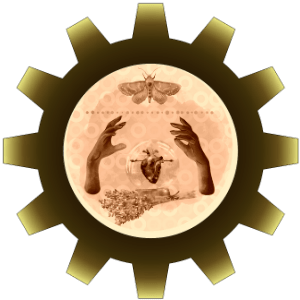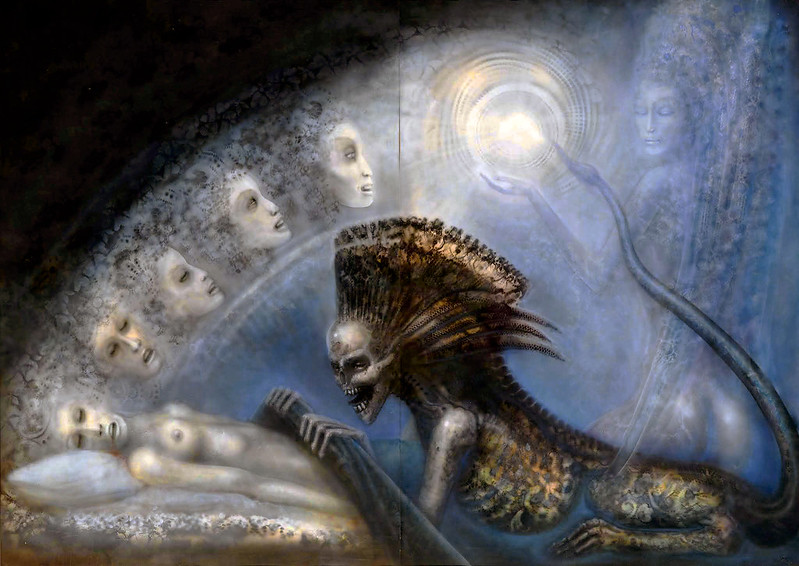Rituals in Witchcraft


Blessing and Consecration for-Books and Grimoires

Death Prayer

Drawing Down the Moon

Fivefold Kiss

Great Rite

Initiation

Meditation With the Archangel Gabriel

Rites of Passage
![]()
A ritual is a prescribed form of ceremony to achieve a transformation of consciousness. All religions and spiritual, mystical and magical traditions have their own rituals, which are the means by which to contact divine or supernatural will or forces. rituals help the individual define him-/herself in relation to the cosmos, and mark progress through life and spiritual unfolding.
In Magic, rituals are used to change consciousness and to bring desired things into being: to invoke the presence of entities, spirits or energies; to release energies; to honour and celebrate deities, nature and sacred times; and to manifest change. rituals in folk magic or witchcraft are spell-castings (see spells), usually for luck, healing, fertility, protection, Exorcism, hexing, “unwitching,” and so on. In high magic, rituals are akin to those in religious ceremonies. In addition, there are sacred/societal rituals of transition, passage and Initiation.
Ritual has played an important role in the development of human consciousness since the beginnings of history. It exists in all facets of life. It is part of the cosmic fabric that weaves everything together in a harmonious whole. Daily life is structured around rituals—personal habits, meals, activities at certain times, and so on.
Ritual helps the human consciousness tap into unseen forces: forces of the inner self, forces of nature, forces of the cosmos. Hsun Tzu, a Chinese philosopher of the third century b.C.e., said that ritual makes for harmony in the universe and brings out the best in human beings—it is the culmination of culture.
In his classic work The Rites of Passage, Arnold Van Gennup described three parts to a ritual: separation, in which there is withdrawal from the world; transition; and incorporation, in which change is integrated into life. Anthropologist Victor Turner described the phase of transition as “liminality,” the “betwixt and between” worlds. He said rituals foster communitas, or a bond that goes beyond words.
When ritual changes consciousness, a space for inner knowing is created; archetypal energies are activated. A new awareness or knowledge may arrive in a dream, flashes of inspiration, signs in the material world or other synchronistic events.
The most effective rituals, even if they are simple, engage the senses as much as possible. Involving the senses alters consciousness and opens the gateway to visionary thinking. This is accomplished through recitation, chanting, singing, prayer and invocation; dancing, movement or postures, or reenactment of mystery dramas; costumes or special dress; incense, smoke, candles or fire; offerings or sacrifices; consumption of food and drink (or, conversely, fasting); purifications; use of sacred objects, relics, tools, images and symbols. These elements create physical and psychological changes intended to help achieve the goal of the ritual.
All elements of a ritual should be observed correctly to ensure success.
Rituals are done both individually and collectively. There is greater power in a group, where all energies are focussed on the same objective.
Carl Jung was critical of the moribund state of ritual in modern Western society. ritual has all but evaporated from daily life and holds little meaning for many in dry religious services. Ritual is emphasized in WICCA and Paganism, and contemporary witches and Pagans have drawn upon traditional pagan sources to create meaningful rituals for modern times. rituals are observed in all worship services, magical workings, Sabbats and personal rites of passage.
See also : Cone of Power; Wheel of the Year.
FURTHER READING:
- Bonewits, Isaac. Real Magic. revised ed. York Beach, me.: Samuel Weiser, 1989.
- Crowley, Vivianne. Wicca: The Old Religion in the New Millennium. revised ed. London: Thorsons/Harper Collins, 1996.
- Driver, Tom F. The Magic of Ritual. San Francisco: HarperSanFrancisco, 1991.
- Eliade, mircea. Patterns in Comparative Religion. New York: New American Library, 1958.
- Van Gennep, Arnold. The Rites of Passage. 1908. Chicago: University of Chicago Press, 1960.
SOURCE:
The Encyclopedia of Witches, Witchcraft and Wicca – written by Rosemary Ellen Guiley – Copyright © 1989, 1999, 2008 by Visionary Living, Inc.











